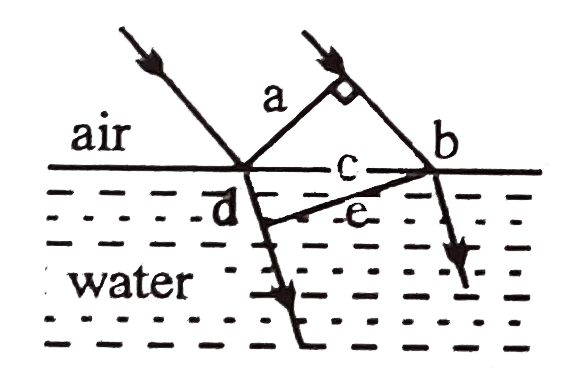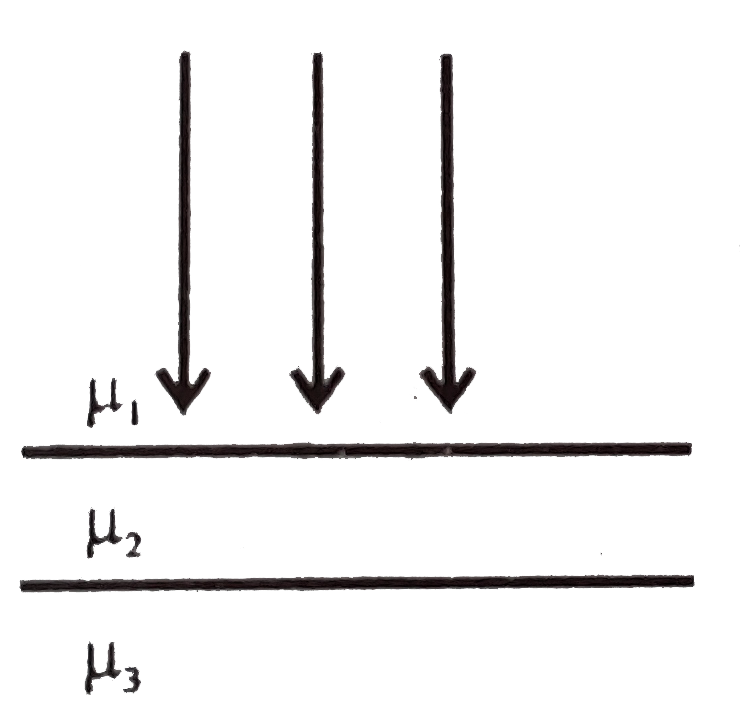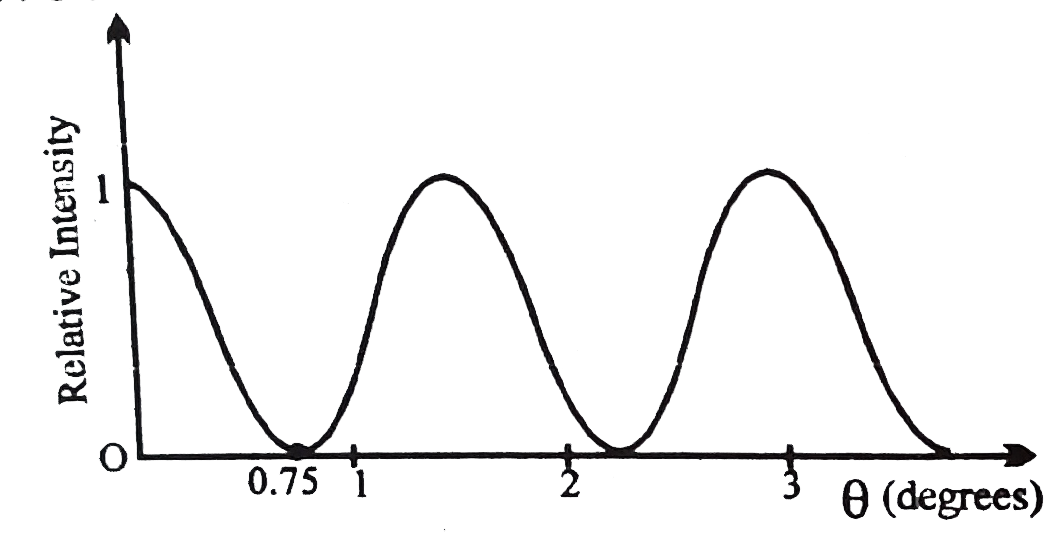Practice Exercise 6.3 from GK PUBLICATIONS PHYSICS (HINGLISH) WAVE OPTICS for Class 12
| Class 12 | PHYSICS |
| Chapter | WAVE OPTICS |
| GK PUBLICATIONS PHYSICS (HINGLISH) | Practice Exercise 6.3 |
| Medium | English |
| Academic Year | 2023-2024 |
Question 3
A narrow slit S transmitting light of wavelength λ is placed a distance d above a large plane mirror as shown in figure. The light coming directly from the slit and that coming after the reflection interference at a screen ∑ placed at a distance LD from the slit. a. What will be the intensity at a poiint just above the mirror. i.e., just above O? b. At what distance from O does the first maximum occur?
?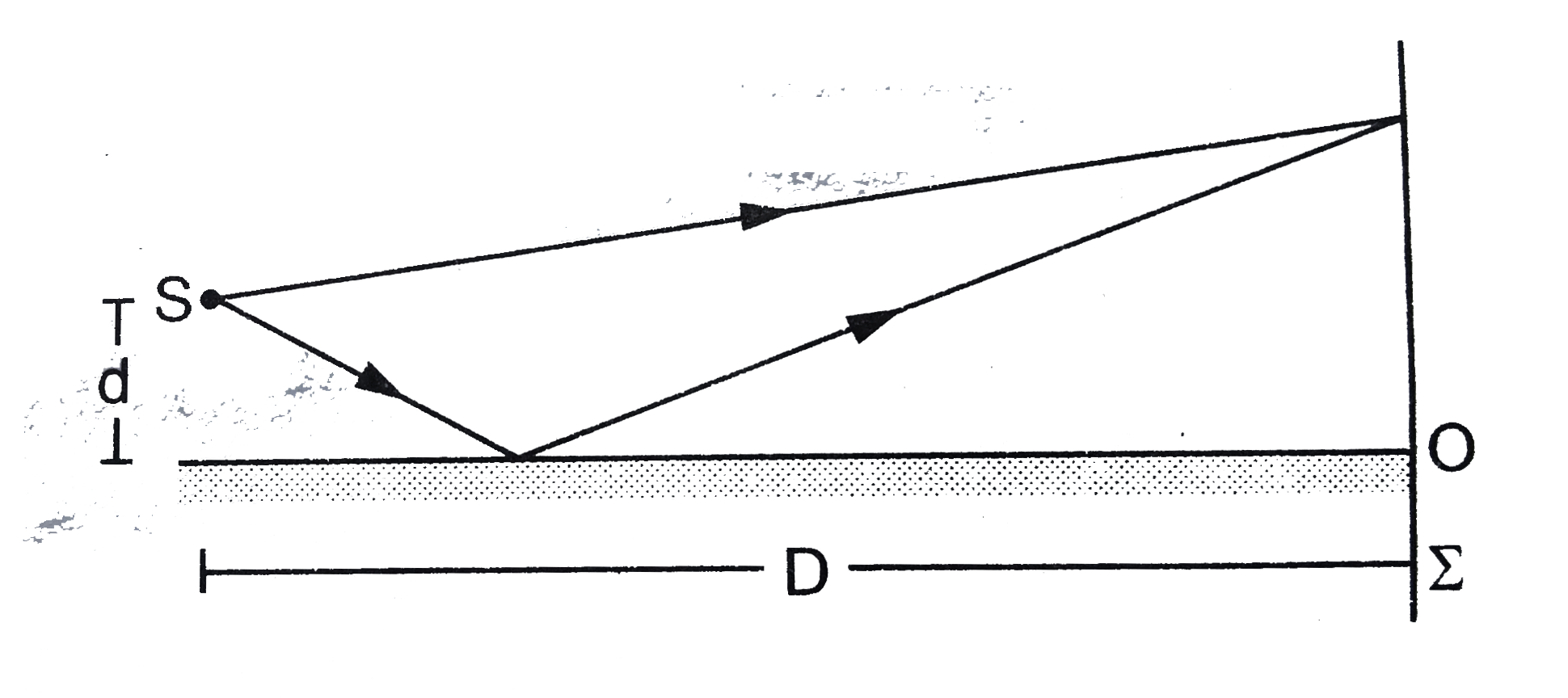 View Solution
View SolutionQuestion 5
A vessel ABCD of 10cm width has two small slits S1 and S2 sealed with idebtical glass plates of equal thickness. The distance between the slits is 0.8mm. POQ is the line perpendicular to the plane AB and passing through O, the middle point of S1 and S2. A monochromatic light source is kept at S,40cm below P and 2m from the vessel, to illuminate the slits as shown in the figure. Calculate the position of the central bright fringe on the other wall CD with respect of the line OQ. Now, a liquid is poured into the vessel and filled up to OQ. The central bright fringe is fiund to be at Q. Calculate the refractive index of the liquid.
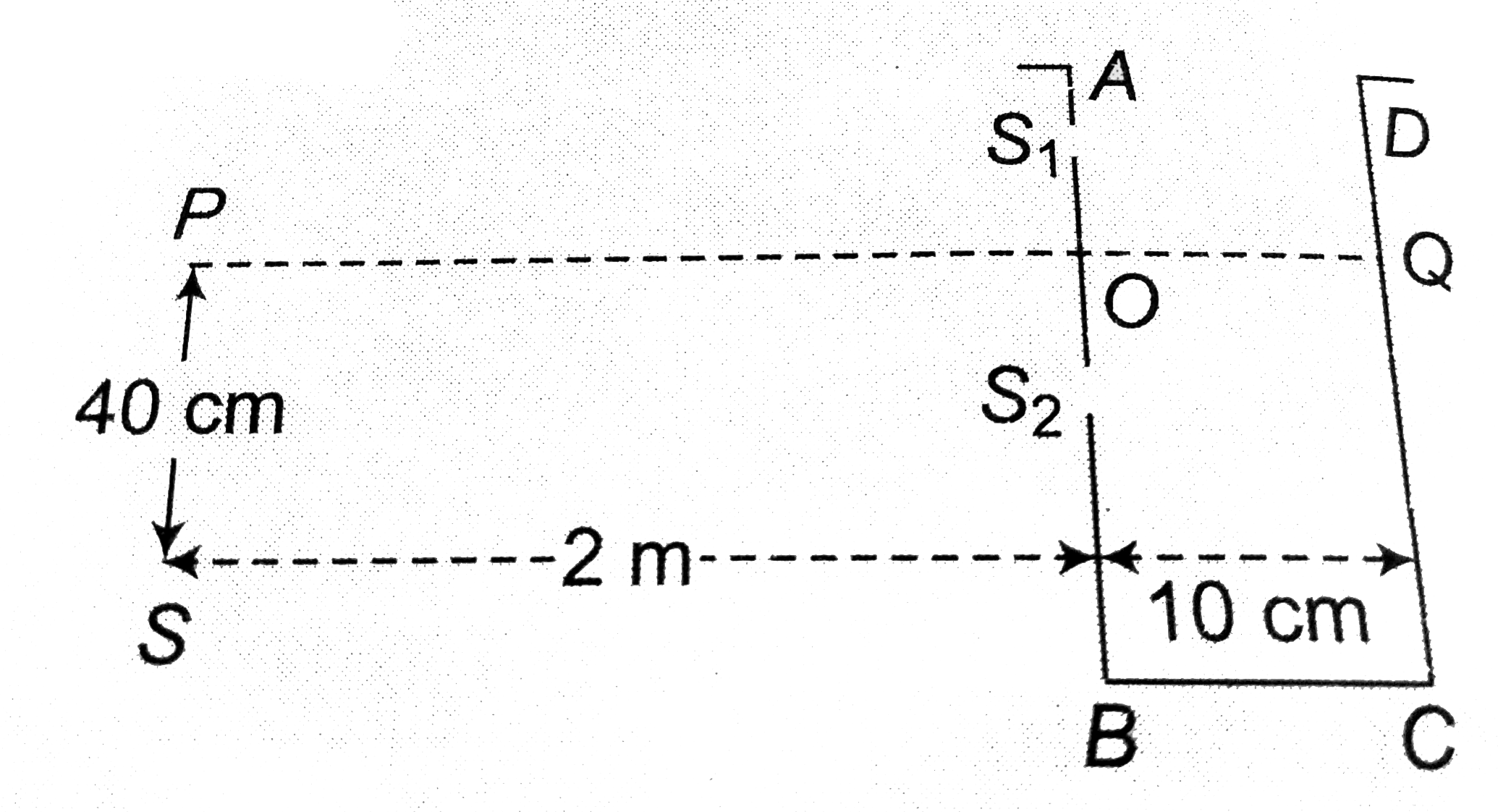 View Solution
View SolutionQuestion 6
In a YDSE setup a parallel light beam containing two wavelength 4000Å and 5600Å is allowed to incident at an angle 30∘ on a diaphragm having two narrow slits at a separation 2 mm as shown in figure-6.46. The screen is placed at a distance 40 cm from the slits. A mica film of thickness 5 mm is placed in front of one of the slits and the whole apparatus is submerged in water. If the central bright fringe is observed at point C, which is equidistant from both the slits. Calculate
(a) The refractive index of the slab.
(b) The distance of the first black line from C.
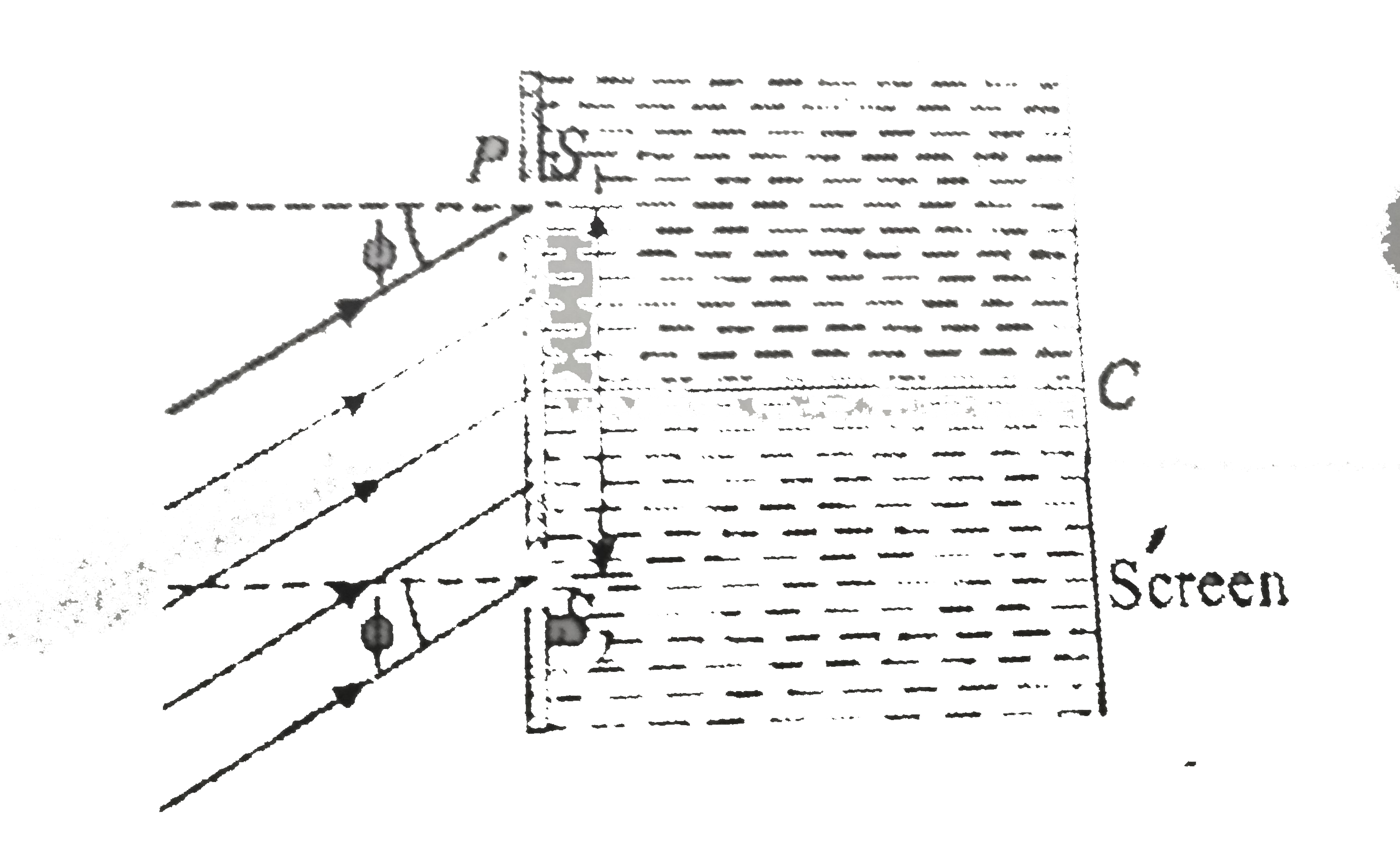
[(a) 1.6, (b) 210 μm]View SolutionQuestion 7
A monochromatic light of wavelength 5000Å incident normally on slit plane of YDSE setup. If d=5×10−4m and D = 1 m and a thin film thickness 1.5×10−6m and μ=1.5 is place in front of one of the slits, find intensity of light at the centre of screen if each slit produces an intensity I0 on screen. [0] View SolutionQuestion 8
Two transparent sheets of thickness t1 and t2 and refractive indexes μ1 and μ2 are placed infront of the slits in YDSE setup as shown in figure-6.47. If D is the distance of the screen from the slits, then find the distance of zero order maxima from the centre of the screen. What is the condition that zero order maxima is formed at the centre O?

[D[(μ1−1)t1−(μ2−1)t2]d,(μ2−1)t2]View SolutionQuestion 10
In figure S is a monochromatic point source emitting light of wavelength λ=500nm. A thin lens of circular shape and focal length 0.10m is cut into two identical halves L1 and L2 by a plane passing through a doameter. The two halves are placed symmetrically about the central axis SO with a gap of 0.5mm. The distance along the axis from A to L1 and L2 is 0.15m, while that from L1 and L2 to O is 1.30m. The screen at O is normal to SO.
(a) If the 3rd intensity maximum occurs at point P on screen, find distance OP.
(b) If the gap between L1 and L2 is reduced from its original value of 0.5mm, will the distance OP increases, devreases or remain the same?
 View Solution
View SolutionQuestion 11
In Young's experiment, the source is red light of wavelength 7×10−7m. When a thin glass plate of refractive index 1.5 at this wavelength is put in the path of one of the intering beams, the central bright fringe shiffts by 10−3m to the position previously occupied by the 5th bright fringe.
When the source is now changed to green light of wavelength 5×10−7m, the central fringe shifts to position initially occupied by the 6th bright fringe to red light. Find the refractive index of glass for green light. View SolutionQuestion 12
In Young’s double slit experiment, the upper slit is covered by a thin glass plate of refractive index 1.4 while the lower slit is covered by another glass plate having same thickness as the first one but having refractive index 1.7.
Interference pattern is observed using light of wavelength5400∘A. It is found that the point P on the screen where the central maximum fell before the glass plates were inserted, now has 34 the original intensity. It is also observed that what used to be 5th maximum earlier, lies below the point P while the6th minimum lies above P. Calculate the thick- ness of glass plates. Absorption of light by glass plate may be neglected.
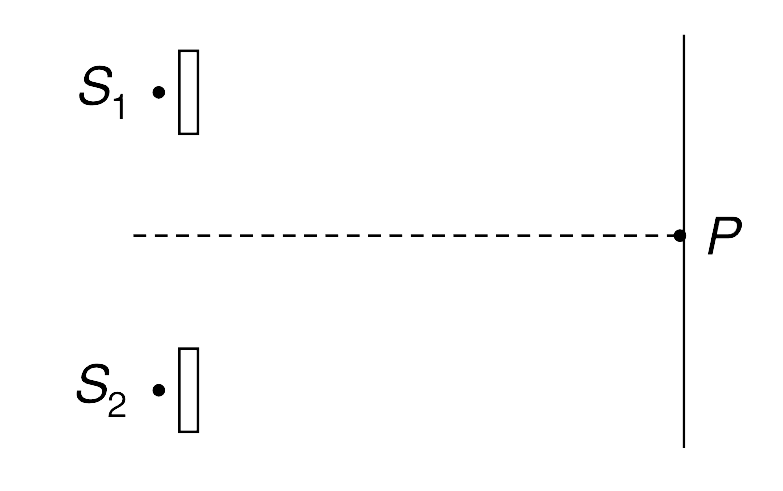 View Solution
View SolutionQuestion 13
A coherent parallel beam of microwaves of wavelength λ=0.5mm falls on aYoung's double- slit apparatus. The separation between the slits is 1.0 mm. The intensity of microwaves is measured on a screen placed parallel to the plane of the slits at a distance of 1.0 m from it as shown in Fig. 2.42.
If the incident beam makes an angle or 30∘ with the x-axis (as in the dotted arrow shown in the figure), find the y-coordinates of the first minima on either side of the central maximum.
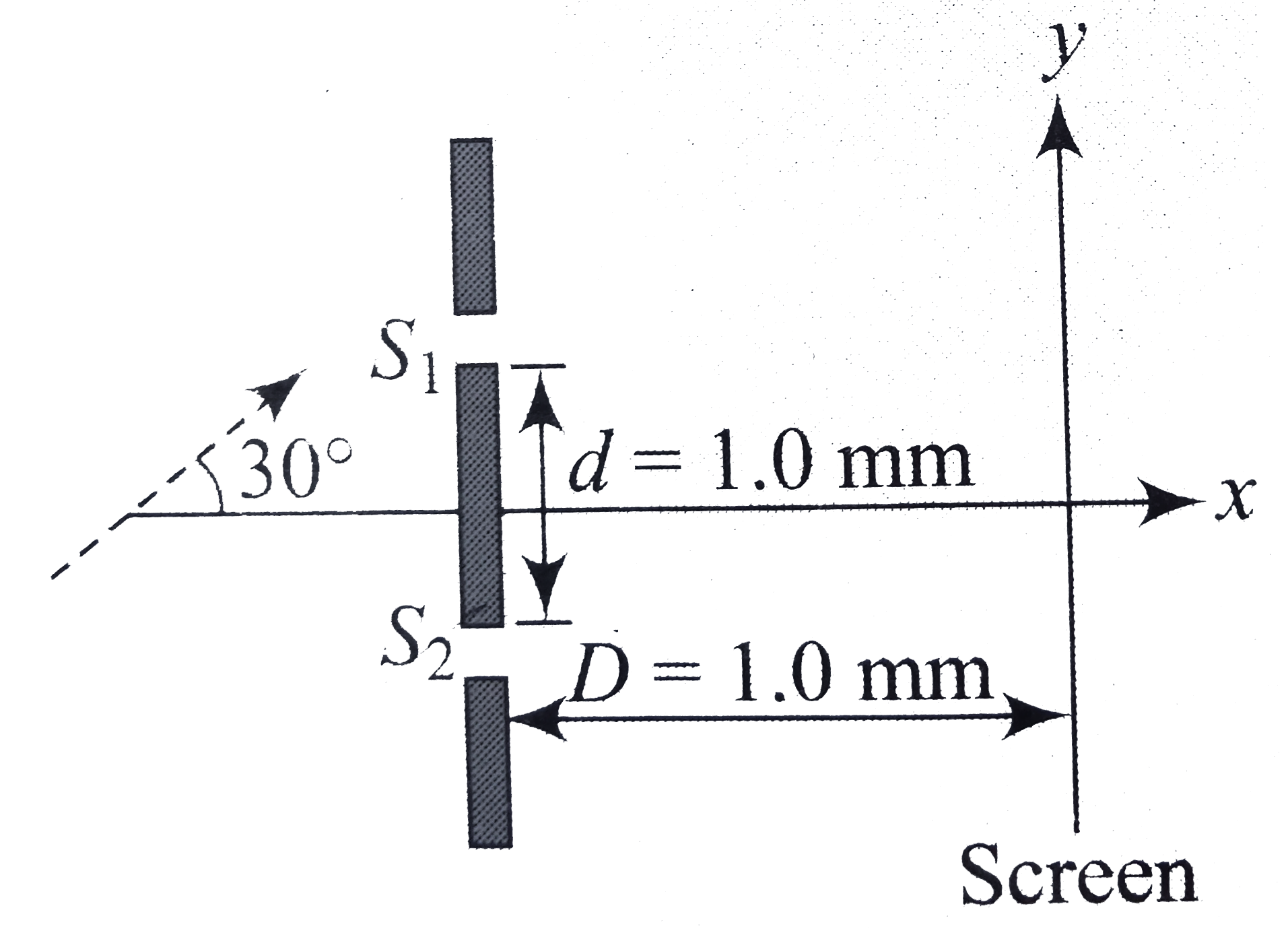 View Solution
View SolutionQuestion 14
A slit of width d is illuminated by white light (which consists of all the wavelengths in the visible range).
(a) For what value of d will the first minimum for red light of wavelength λ=6500Å appear at θ=15∘ ?
(b) What is the wavelength λ of the light whose first side diffraction maximum is at 15∘, thus coinciding with the first minimum for the red light?
[(a)2.5μm,(b)4300Å]View SolutionQuestion 15
A glass of refractive index 1.5 is coated with a thin layer of thickness t and refractive index 1.8 . Light of wavelength λ travelling in air is incident normally on the layer. It is partly reflected at the upper and the lower surfaces of the layer. It is partly reflected at the upper and the lower surfaces of the layer ant the two reflected rays interface . If λ=648nm, obtain the least value of t(in10−8m) which the rays interface constructively.View SolutionQuestion 16
Our disscusssion of the techniques for determining cosntructive and destructive by reflection from a thin film in air has been confused to rays striking the film a nearly the normal incidence.Assume that a ray is incident at an angle of 45∘ (relative to the normal ) on a film with an index of refraction of √2.Calculate the minimum thickness fro constructive interference for light of wavelength 600nm.View SolutionQuestion 18
A wedge-shaped film of air is produced by placing a fine wire of diameter D between the ends of two flat glass plates of length L=20cm, as shown in the figure-6.68. When the air film is illuminated with light of wavelength λ=5500Å, there are 12 dark fringes found per centimeter on the wedge. Find the wire diameter D.
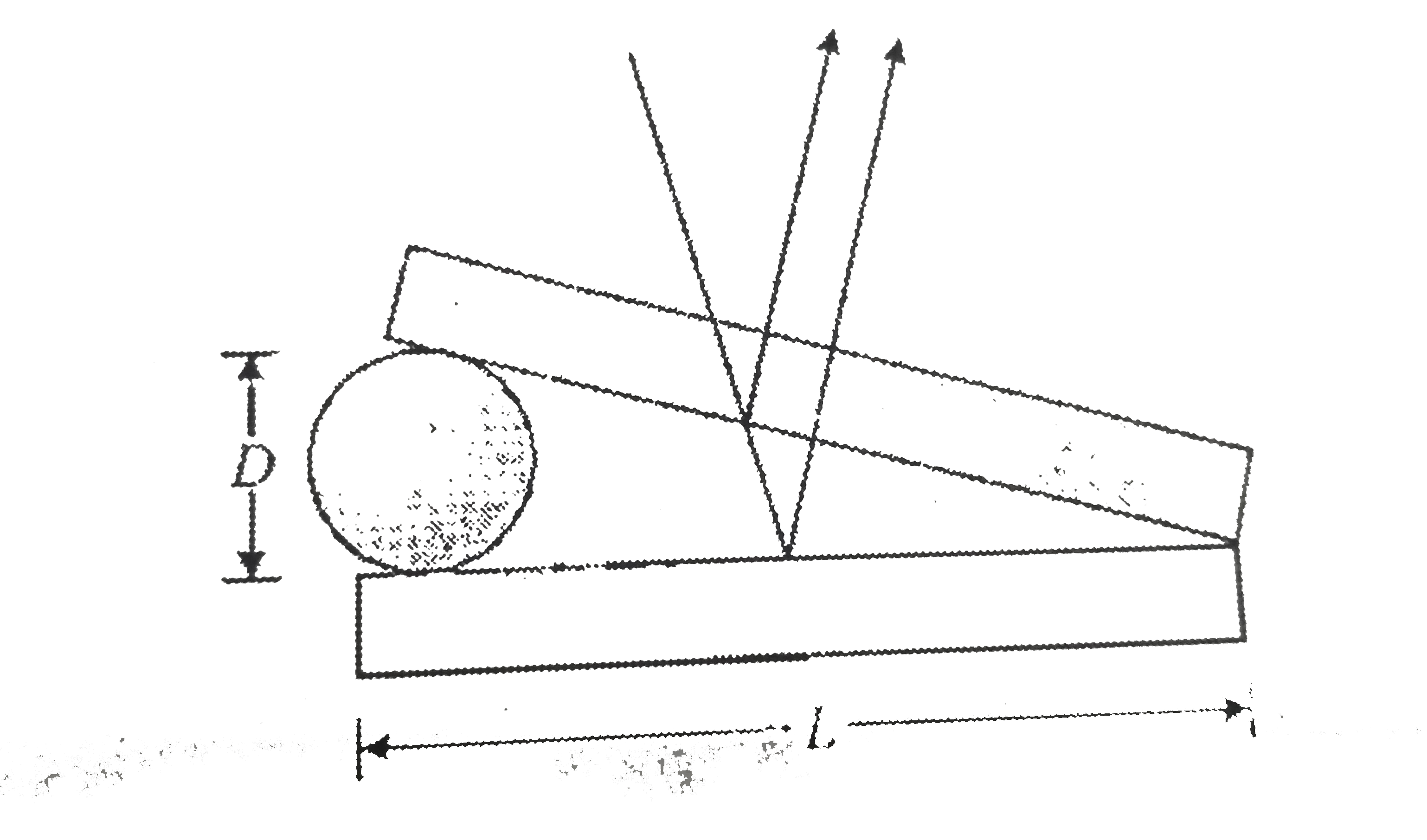
[6.6×10−5m]View SolutionQuestion 21
A point sources S emitting light of wavelength 600nm is placed at a very small height h above the flat reflecting surface AB(see figure).The intensity of the reflected light is36% of the intensity.interference firnges are observed on a screen placed parallel to the reflecting surface a very large distance D from it.
(A)What is the shape of the interference fringes on the screen?

(B)Calculate the ratio of the minimum to the maximum to the maximum intensities in the interference fringes fromed near the point P (shown in the figure) (c) if the intenstities at point P corresponds to a maximum,calculate the minimum distance through which the reflecting surface AB should be shifted so that the intensity at P again becomes maximum.View SolutionQuestion 22
A narrow slit of width 0.025 mm is illuminated by a parallel beam of light. The diffraction pattern is observed through a telescope. It is found that to reach the first minimum, the telescope has to be rotated through 1∘24' from the direction of the direct ray. Calculate the wavelength of light used.
[6100Å]View SolutionQuestion 23
A slit is located 'at infinity' in front of a lens of focal length 1 m and is illuminated normally with light of wavelength 6000Å. The first minima on either side of the central maximum of the diffraction pattern observed in the focal plane of the lens are separated by 4 mm. What is the width of the slit?
[0.3 mm]View SolutionQuestion 26
(a) Ordinary light incident on one Polaroid sheet falls on a second Polaroid whose plane of vibration makes an angle of 30∘ with that of the first Polaroid. If the Polaroids are assumed to be ideal, what is the fraction of the original light transmitted through both Polaroids?
(b) If the second Polaroid is rotted until the transmitted intensity is 10 percent of the incident intensity, what is the new angle?
[(a)3/8,(b)63.4∘]View SolutionQuestion 27
Three nicols prisms are placed such that, first and third are mutually perpendicular. Unpolarised light is incident on first nicol's prism, the intensity of light emerges from third nicol's prism is 1/16 the intensity of incident light. Find the angle between first and second nicol's prisms.
[22.5∘]View SolutionQuestion 29
A mixture of plane polarised and unpolarised light falls normally on a polarising sheet. On rotating the polarising sheet about the direction of the incident beam, the transmitted intensity varies by a factor 4. Find the ratio of the intensities IP and I0 respectively of the polarized and unpolarised components in the incident beam. Next the axis of polarising sheet is fixed at an angle of 45∘ with the direction when the transmitted intensity is maximum. Then obtain the total intensity of the transmitted beam in terms of I0.
[32,5I04]View SolutionQuestion 50
A parallel monochromatic beam of light is incident normally on a narrow slit. A diffraction pattern is formed on a screen placed perpendicular to the direction of the incident beam. At the first minimum of the diffraction pattern, the phase difference between the rays coming from the two edges of the slit isView SolutionQuestion 64
Two polaroids are placed in the path of unpolarized beam of intensity I0 such that no light is emitted from the second polarid. If a third polaroid whose polarization axis makes an angle θ with the polarization axis of first polaroid, is placed between these two polariods then the intensity of light emerging from the last polaroid will beView SolutionQuestion 65
Two light waves arrives at a certain point on a screen. The waves have the same wavelength. At the arrival point, their amplitudes and phase differences are :
(I) 2a0,6a0 and π rad (II)3a0,5a0 and π and
(III) 9a_(0), 7a_(0), " and "3pi " rad"(IV)2a0,2a0 and 0.
The pair/s which has greatest intensity is/are :View SolutionQuestion 68
White light is used to illuminate the two slits in a Young's double slit experiment. The separation between the slits is b and theh screen is at a distance d(>>b) from the slits At a point on the screen directly in front of one of the slits, certain wavelengths are missing some of these missing wavelengths are View SolutionQuestion 79
Two slits S1 and S2 illuminated by a white light source give a white central maxima. A transparent sheet of refractive index 1.25 and thickness t1 is placed in front of S1. Another transparent sheet of refractive index 1.50 and thickness t2 is placed in front of S2. If central maxima is not effected, then ratio of the thickness of the two sheets will be : View SolutionQuestion 84
In YDSE shown in figure a parallel beam of light is incident on the slits from a medium of refractive index n1. The wavelength of light in this medium is λ1. A transparent of thickness t and refractive index n3 is put in front of one slit. The medium between the screen and the plane of the slits is n2. The phase difference between the light waves reaching point O (symmetrical, relative to the slits) is
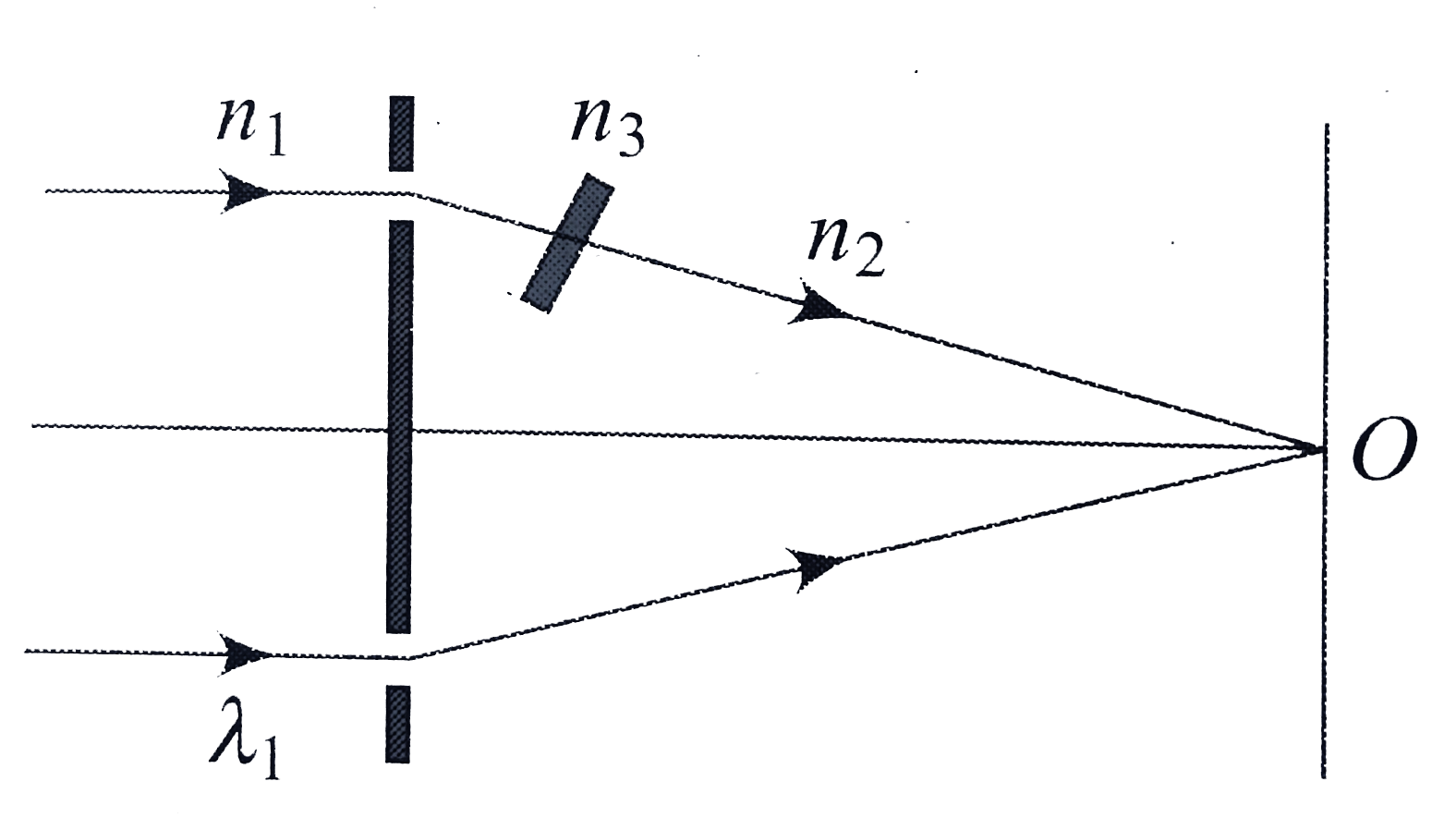 View Solution
View SolutionQuestion 92
A double slit experiment is done with monochromatic light of wavelength 6000Å. Slits are 2 mm apart and fringes are observed on a screen placed 10 cm away from the slits. If a transparent plate of thickness 0.5 mm is placed in front of one of the slit, interference pattern shifts by 5 mm. Then refractive index of transparent plate should be :View SolutionQuestion 98
A plane monochromatic light falls normally on a diaphragm with two narrow slits separated by a distance d = 2.5 mm. A fringe pattern is formed on the screen placed at D = 100 cm behind the diaphragm. If one of the slits is covered by a glass plate of thickness 10μm, then distance by which these fringes will be shifted will be :View SolutionQuestion 109
Angular width of central maxima in the Fraunhofer diffraction pattern of a slit is measured. The slit is illuminated by light of wavelength 6000Å. When the slit is illuminated by light of another wavelength, the angular width decreases by 30%. The wavelength of this light will beView SolutionQuestion 113
In YDSE using monochromatic light the fringe pattern shifts by a certain distance on the screen when a mica sheet of refractive index 1.6 and thickness 1.964 microns is introduced in the path of one of the interfering waves. The mica sheet is then removed and the distance between the plane of slits and the screen is doubled. It is found that the distance between successive maxima (or minima) now is the same as the observed fringe shift upon the introduction of the mica sheet. Calculate the wavelength of the light.View SolutionQuestion 114
In a two slit experiment with monochromatic light fringes are obtained on a screen placed at some distance from the sits. If the screen is moved by m 5×10−2m towards the slits, the change in fringe width is m 3×10−5m . If separation between the slits is 10−3m , the wavelength of light used is View SolutionQuestion 115
A monochromatic light of λ=500nm is incident on two identical slits separated by a distance of 5×10−4m. The interference pattern is seen on a screen placed at a distance of 1m from the plane of slits. A thin glass plate of thickness 1.5×10−6m and refractive index μ=1.5 is placed between one of the slits and the screen. Find the intensity at the centre of the screen if the intensity is I0 in the absence of the plate. Also find the lateral shift of the central maxima and number of fringes crossed through centre.View SolutionQuestion 116
In a YDSE, the separation between slits is 2mm where as the distance of screen from the plane of slits is 2.5m. Light of wavelengths in the range 200−800nm is allowed to fall on the slits. Find the wavelengths in the visible region that will be present on the screen at 1mm from central maximum. Also find the wavelength that will be present at that point of screen in the infrared as well as in the ultraviolet region.View SolutionQuestion 117
A double-slit apparatus is immersed in a liquid of refractive index 1.33. in It has slit separation of 1 mm and distance between the plane of slits and screen is 1.33 m. The slits are illuminated by a parallel beam or light whose wavelength in air is 6300Å.
a. Calculate the fringe width.
b. One of the slits of the apparauts is covered by a thin glass sheet of refractive index 1.53. Find the smallest thickness of the sheet to bring the adjacent minimum on the axix.View SolutionQuestion 127
In two separate set-ups of the Young's double slit experiment, fringes of equal width are observed when lights of wavelength in the ratio of 1:2 are used. If the ratio of the slit separation in the two cases is 2:1, the ratio of the distance between the plane of the slits and the screen in the two set-ups areView SolutionQuestion 128
In a young's double slit experiment, two slits are illuminated by a mixture of two wavelength 12000Å and 10000Å. At 6.0 mm from the common central bright fringe on a screen 2 m away from the slits, a bright fringe of one interference pattern coincides with the bright fringe of other. Distance between the slits should by : View SolutionQuestion 137
_E01_052_Q01.png)
In an interference arrangement similar to young's double slit experiment the slits S1 and S2 are illuminated with coherent microwave sources each of frequency 106Hz the sources are synchronized to have zero phase difference. the slits are separated by a distance d=150.0m. The intensity I(θ) is measured as a funtion of θ, where θ is defined as shown. if I0 is the maximum intensity then I(θ) for 0≤θ≤90∘ is given by:View SolutionQuestion 144
In a series of polaroids placed in such a way that optical axis of each polaroid makes same angle with the next one. When unpolarized light falls on first and if no light is coming out from the last polaroid then by using how many number of polaroids in series this can be achieved : View SolutionQuestion 145
A prism having angle A∘ (which is very small) is placed in front of a point source S at a small distance d. A screen is placed at a large distance D as shown in the figure-6.113. Find the fringe width of interference pattern given that source is emitting light of wavelength λ and refractive index of prism is μ.
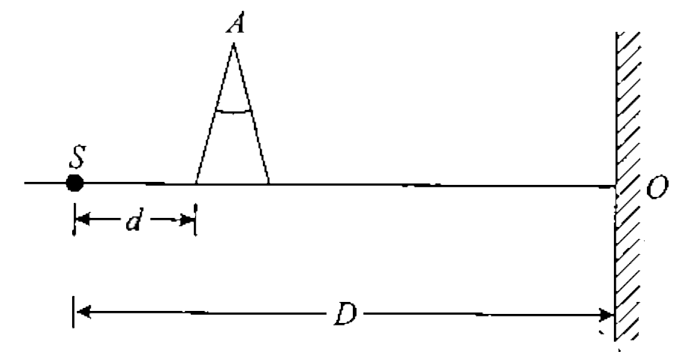 View Solution
View SolutionQuestion 148
Two coherent narrow slits emitting light of wavelength λ in the same phase are placed parallel to each other at a small separation of 2λ. The light is collected on a screen S which is placed at a distance D(>>λ) from the slit S1 as shown in figure. Find the finite distance x such that the intensity at P is equal to intensity O.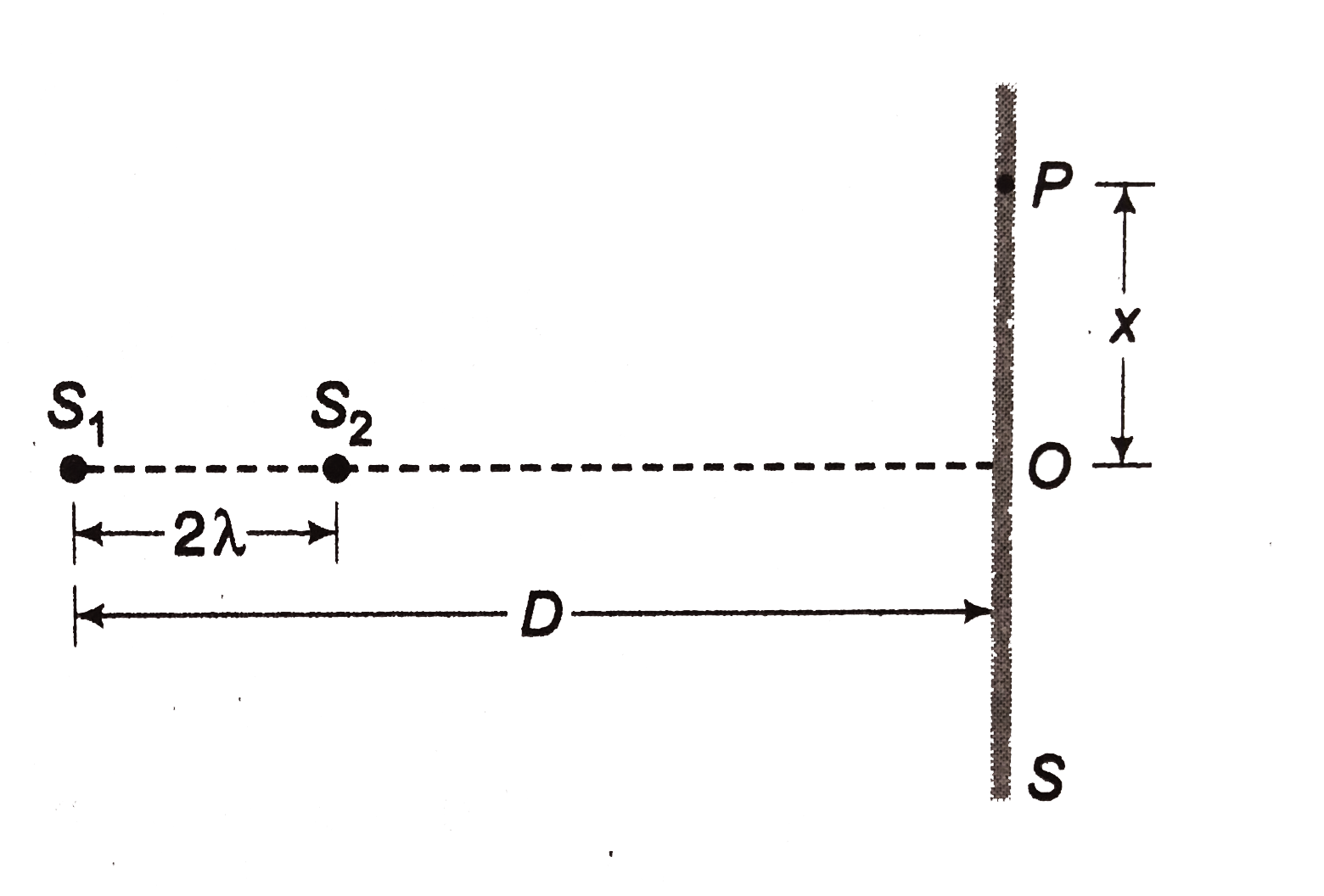 .View Solution
.View SolutionQuestion 149
In Young's double-slit experiment, the slit are 0.5 mm apart and the interference is observed on a screen at a distance of 100 cm from the slits, It is found that the ninth bright fringe is at a distance of 7.5 mm from the second dark fringe from the center of the fringe pattern. The wavelength of the light used is View SolutionQuestion 152
One radio transmitter A operating 60.0MHzis 10.0from another similar transmitter B that is 180∘ out of phase with transmitterA.How far must be observer move from transmitter A towards transmitter B along the line connencting A andB to reach the nearest point when the two beam are in phase?View SolutionQuestion 155
Two microwave coherent point sources emitting waves of wavelenths λare placed at 5λdistance apart.The interference is being observed on a flat non-reflecting surface along a line passing through on sources ,in a direction perpendicular to the line joining the two sources(refer figure)
Considering λas4mn ,calculate the positions of maxima and draw shape of interference pattern,takek initial phase differnce between the two sources to be zero.
 View Solution
View SolutionQuestion 156
In a YDSE two thin transparent sheet are used in front of the slits S1&S2 having μ1=1.6and μ2=1.4 respectively.If both sheets have thicknesst ,the central maximum is observed at a distance of 5mmfrom centerO.Now the sheets are replaced by another two sheets each of refractive index μ1−μ22 but having thickness t1&t2=t1−t22.Now central maximum is observed at distance of 8mm from centerO on the same side as before.Find the thickness t1 (inμm) [Given:d=1mm,D=1m]
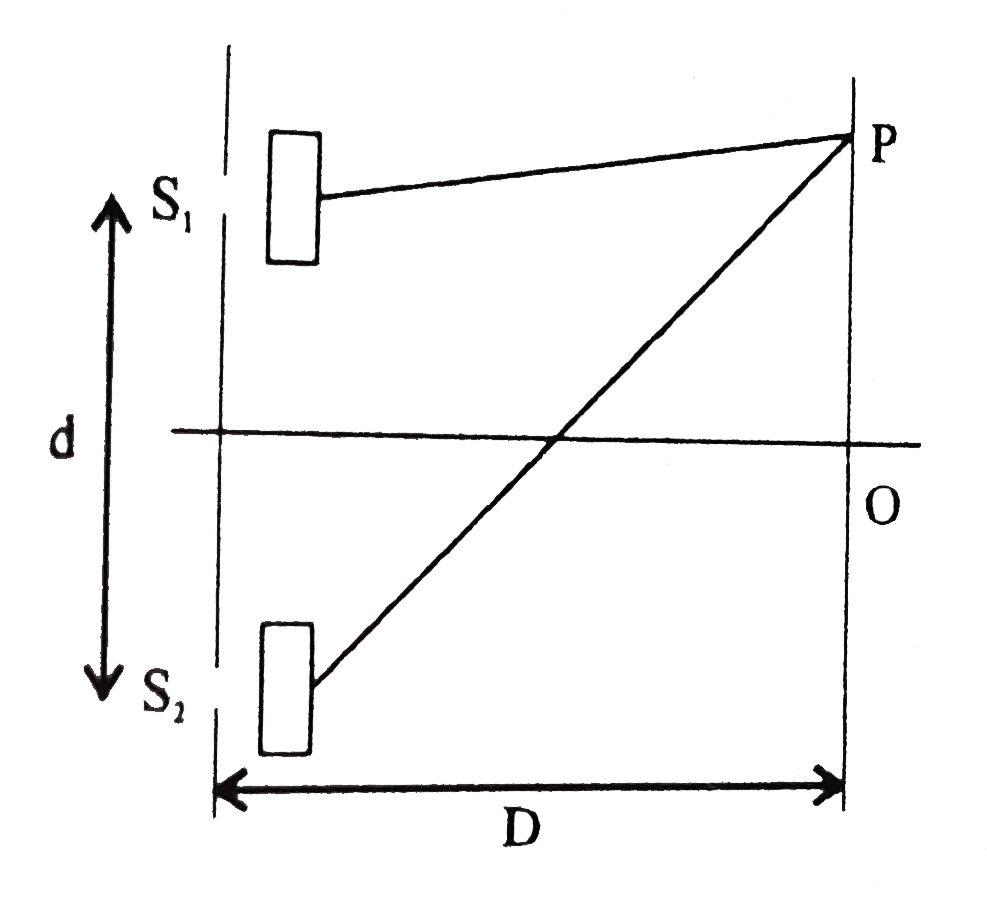 View Solution
View SolutionQuestion 157
In a two slit experiment with monochromatic light fringes are obtained on a screen placed at some distance from the sits. If the screen is moved by m 5×10−2m towards the slits, the change in fringe width is m 3×10−5m . If separation between the slits is 10−3m , the wavelength of light used is View SolutionQuestion 158
A source S is kept directly behind the slit S1 in a double slit apparatus. What will be the phase difference at P, if a liquid of refraction index μis filled : (wavelength of light in aire is λ due to the source, assume l>>d,D>>d).
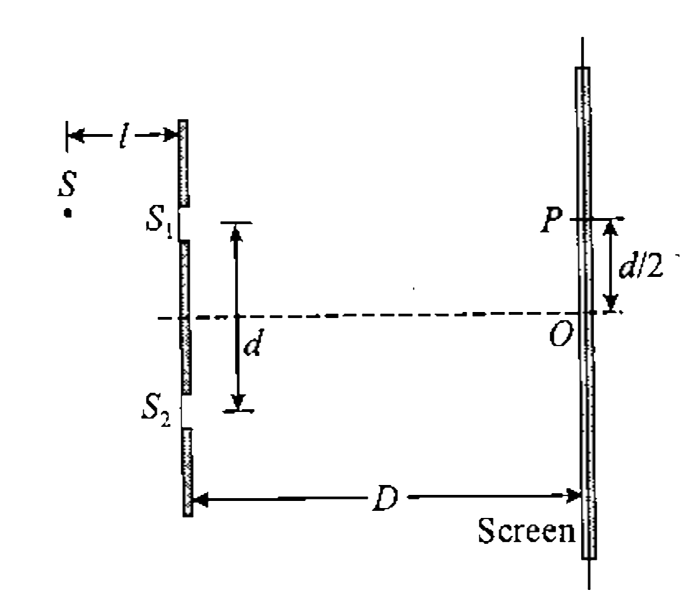
(a) Between the screen and the slits.
(b) Between the slits & the source S. In this case, find the minimum distance between the points on the screen where the intensity is half the maximum intensity on the screen. View SolutionQuestion 159
_E01_102_Q01.png)
In a YDSE a parallel beam of light of wavelength 6000Å is incident on slits at angle of incidence 30∘. A and B are two thin transparent films each of refractive index 1.5. thickness of A is 20.4μm. Light coming through A and B have intensities I and 4I resepctively on the screen. Intensity at point O which is symmetric relative to the slits is 3I. The central maxima is above O.
(i). what is the maximum thickness of B to do so. Assuming thickness of B to be that found in part (i) answer the following parts.
(ii). Find fringe width, maximum intensity and minimum intensity on screen.
(iii). Dinstance of nearest minima from O
(iv) intensity at 5 cm on either side of O.View SolutionQuestion 160
A plastic film with index of refraction 1.80 is put on the surface of a car window to increase the reflectivity and thereby to keep the interior of the car cooler. The widow glass gas index of refraction 1.60.
What minimum thickness is required, if light of wavelength 600 nm in air reflected from the two sides of the film is to interfere constructively?
(b) It is found to be difficult to manufacture and install coatings as thin as calculated in part (a). What is the next greatest thickness for which there will also be constructive interference? View SolutionQuestion 161
Two coherent monochromatic sources A and B emit light of wavelength λ. The distance beween A and B is d=4λ.
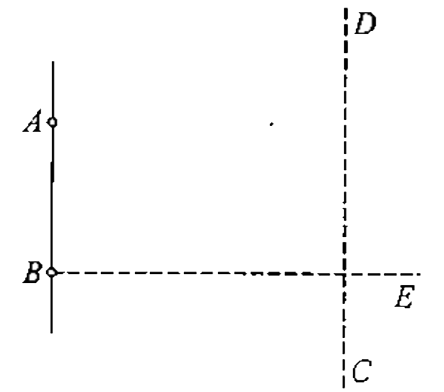
(a) If a light detector is moved along a line CD parallel to AB, what is the maximum number of minima observed ?
(b) If the detector is moved along a line BE perpendicular to AB and passing through B, what is the number of maxima observed ? View SolutionQuestion 162
A beam of light consisting of two wavelength, 6500Å and 5200Å is used to obtain interference fringes in a Young's double slit experiment. Find the distance of the third fringe on the screen from the central maximum for the wavelength 6500Å. What is the least distance from the central maximum at whixh the bright fringes due to both wavelengths coincide? The distance between the slits is 2 mm and the distance between the plane of the slits and the screen is 120 cm.View SolutionQuestion 163
In an experiment using Fresnel biprism, fringes of width 0.185×10−3m are observed at a distance of 1 m from the slit. Images are of the coherent sources are then produced at the same distane from the slit by placing a convex lens at a distance of 0.3 m form the slit. The images are found to be separated by 0.7×10−2m. Calculate the wavelength of the light used.View SolutionQuestion 164
Two identical monochromaticlight sources A & B intensity 10−15W/m2 produce wavelength of light 4000√3Å A glass of thickness 3mm is placed in the path of the ray as shown in figure the glass has a varible refractive index n=1+√x where x (in mm) is distance of plate from left to right calculate total intensity at focal points F of the lens.
_E01_100_Q01.png) View Solution
View SolutionQuestion 166
Biprism fringes are produced with the help of sodium light (λ=5893Å). The angle of the biprism is 179.5^(@) and tis refractive index 1.5. If the distance between the slit and the biprism is 0.4m and the distance between the biprism and the screen is 0.6 m, find the distance between successive bright fringes. Also calculate the maximum width of the slit for which the fringes will still be sharp. View SolutionQuestion 168
A narrow monochromatic beam of light of intensity 1 is incident on a glass plate as shown in figure Another identical glass plate is kept close to the first one and parallel to it. Each glass plate reflects 25% of the light incident on it and transmits intensities in the interference pattern formed by two beams obtained after one reflection at each plate.
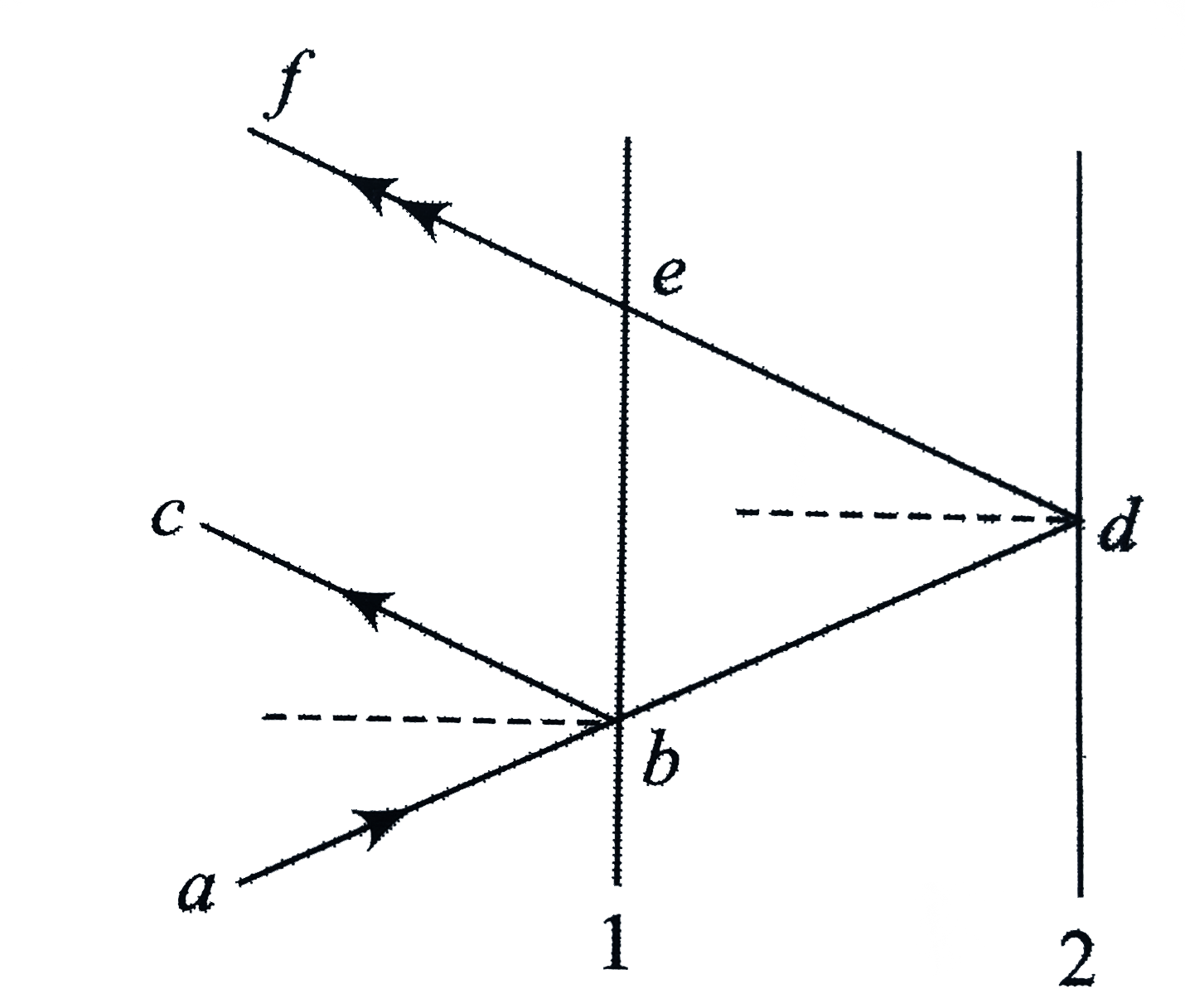 View Solution
View SolutionQuestion 169
A plane light wave of wavelength λ=700nm falls normally on the base of a biprism made of glass (μ=1.560) width refracting angle θ=5∘. A plate is placed behind the biprism and the space between them is filled with a liquid of refractive index (μ'=1.500). Find the fringe width on a screen behind the biprism.
 View Solution
View SolutionQuestion 172
Two parallel beams of light P and Q are incident normally on a prism and the transmitted rays are brought to focus with the help of a convergent lens as shown in Fig. 2.23. If the intensities of the upper and lower beams immediately after transmission from face AC are 4I and I, respectively, find the resultant intensity at the focus.View SolutionQuestion 174
Two coherent monochromatic sources A and B emit light of wavelength λ. The distance beween A and B is d=4λ.

(a) If a light detector is moved along a line CD parallel to AB, what is the maximum number of minima observed ?
(b) If the detector is moved along a line BE perpendicular to AB and passing through B, what is the number of maxima observed ? View SolutionQuestion 175
In a Young's arrangement, the distance between the slits is 1.5 mm and the distance of the screen from the slits is 2m. At what minimum distance from the central fringe will red and violet bright fringes coincide if the slit is illuminated with white light? The wavelength range in white light is from 420 nm to 690 nm.View SolutionQuestion 176
A double slit apparatus is immersed in a liquid of refractive index 1.33. It has slit and the screen 1 mm. The slits are illuminated by a parallel beam of light whose wavelength in air is 6300Å
a. calculate the fringe width.
b. One of the slits of the apparatus is covered by a thin glass sheet of refractive index 1.53. Find the smallest thickness of the sheet to bring athe adjacent minima on the axis.View SolutionQuestion 177
In a YDSE, the separation between slits is 2mm where as the distance of screen from the plane of slits is 2.5m. Light of wavelengths in the range 200−800nm is allowed to fall on the slits. Find the wavelengths in the visible region that will be present on the screen at 1mm from central maximum. Also find the wavelength that will be present at that point of screen in the infrared as well as in the ultraviolet region.View SolutionQuestion 178
A narrow slit of width 0.025 mm is illuminated by a parallel beam of light. The diffraction pattern is observed through a telescope. It is found that to reach the first minimum, the telescope has to be rotated through 1∘24' from the direction of the direct ray. Calculate the wavelength of light used.
[6100Å]View SolutionQuestion 179
Angular width of central maximum in the Fraunhoffer diffraction pattern of a slit is measured. The slit is illuminated by light of wavelength 6000Å. When the slit is illuminated by light of another wavelength, the angular width decreases by 30%. Calculate the wavelength of this light. The same decrease in the angular width of central maximum is obtained when the original apparatus is immersed in a liquid. Find the refractive index of the liquid.View SolutionQuestion 180
In a Young's double slits set up, the wavelength of light used is 546nm. The distance of screen from slits is 1m. The slits separation is 0.3 mm.
(a) Compare the intensity at a point P distant 10mm from the central fringe where the intensity is I0.
(b) Find the number of bright fringes between P and the central fringe. View SolutionQuestion 182
An interference is observed due to two coherent sources S1 placed at origin and S2 placed at (0,3λ,0). Here, lambda is the wavelength of the sources. A detector D is moved along the positive x-axis. Find x-coordinates on the x-axis (excluding x=0andx=∞) where maximum intensity is observed.View SolutionQuestion 183
A Young's double slit apparatus is immersed in a liquid of refractive index μ1. The slit plame touches the liquid surface. A parallel beam of monochromatic light of wavelength λ (in air) is incident normally on the slits.
a. Find the fringe width.
b. If one of the slits (say S2) is covered by a transparent slab of refrative index μ2 and thickless t as shown, find the new position of central maxima.
c. Now, the other slit, S1 is also covered by a slab of same thickness and refractive index μ3 as shown in Fig. 2.49 due to which the central maxima recovers it positon, find the value of μ3
Find the ratio of intensities at O in the three conditions (a), (b), and (c).View SolutionQuestion 184
In a Young's double slit experiment, the light sources is at distance l1=20μm and l2=40μm form the main slit. The light of wavelength lambda = 500nm is incident on slits separated at a distance 10μm. A screen is placed at a distance D = 2 away from the slits as shown in figure. Find
(a) the values of θ relative to the central line where maxima appear on the screen?
(b) how many maxima will appear on the screen?
(c) what should be the minimum thickness of a slab of refractive index 1.5 placed on the path of one of the ray so that minima occurs at C ?
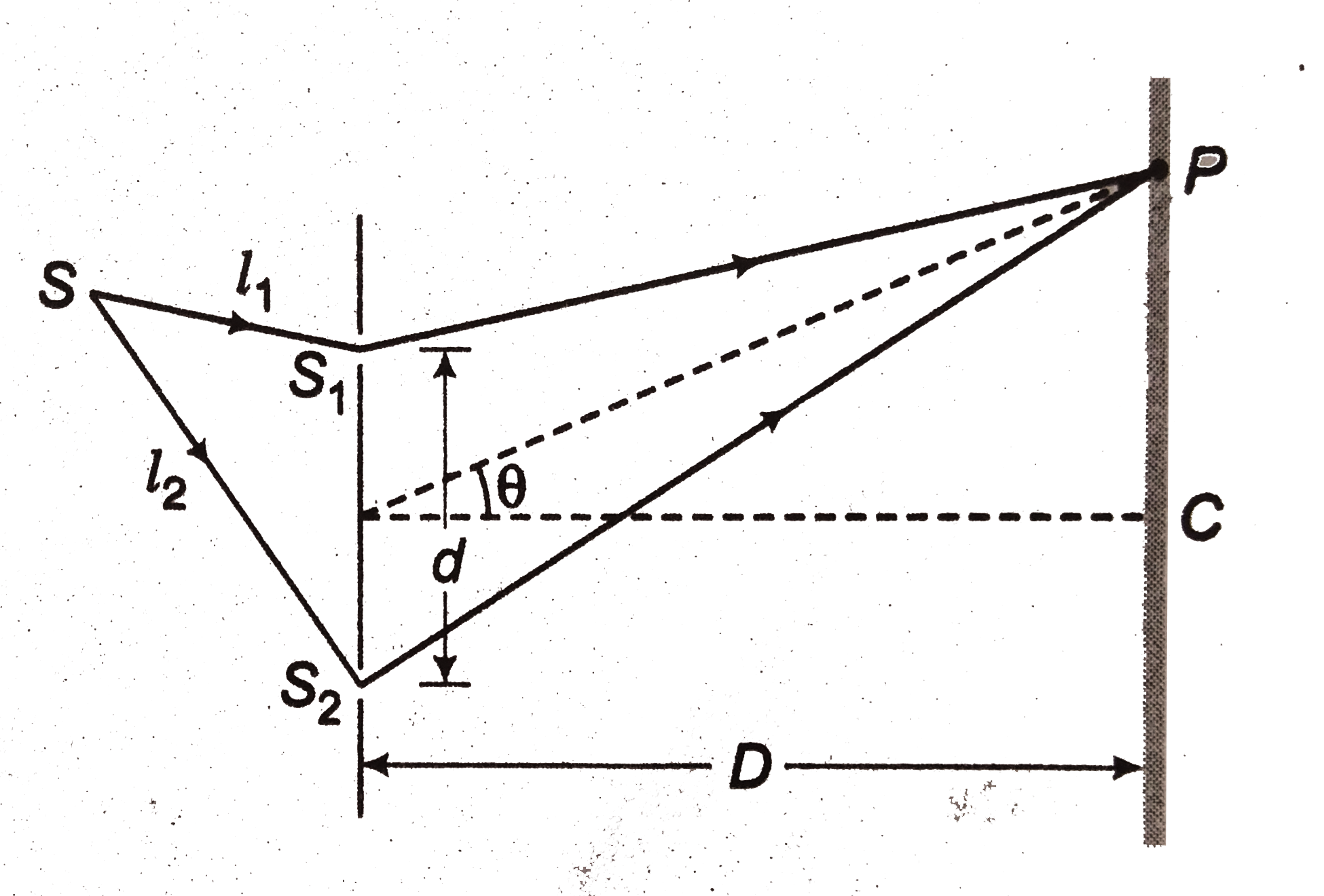 .View Solution
.View SolutionQuestion 186
In a double slit experiment, the distance between the slits is 5.0 mm and the slits are 1.0m from the screen. Two interference patterns can be seen on the screen one due to light with wavelength 480nm, and the other due to light with wavelength 600nm. What is the separation on the screen between the third order bright fringes of the two intergerence patterns?View SolutionQuestion 187
In a Young's double slit experiment using monochromatic light, the fringe pattern shifts by a certain distance on the screen when a mica sheet of refractive index 1.6 and thickness 1.964 microns is introduced in the path of one of the interfering waves. The mica sheet is then removed and the distance between the slits and screen is doubled. It is found that the distance between successive maxima now is the same as observed fringe shift upon the introduced of the mica sheet . Calculate the wavelength of the monochromatic light used in the experiment .View SolutionQuestion 189
In a Young's double slits set up, the wavelength of light used is 546nm. The distance of screen from slits is 1m. The slits separation is 0.3 mm.
(a) Compare the intensity at a point P distant 10mm from the central fringe where the intensity is I0.
(b) Find the number of bright fringes between P and the central fringe. View SolutionQuestion 190
Interference pattern with Young's double slits 1.5mm apart are formed on a screen at a distance 1.5m from the plane of slits. In the path of the beam of one of the slits, a transparent film of 10 micron thickness and of refractive index 1.6 is interposed while in the path of the beam from the older slit a transparent film of 15 micron thickness and of refractive index 1.2 is interposed. Find the displacement of the fringe patten. View SolutionQuestion 191
A glass plate (n=1.53) that is 0.485 μ m thick and surrounded by air is illuminated by a beam of white light normal to the plate.
(a) What wavelengths (in air) within the limits of the visible spectrum (λ=400to700nm) are intensified in the reflected beam ?
(b) What wavelengths within the visible spectrum are intensified in the transmitted light?View SolutionQuestion 192
An oil film covers the surface of a small pond. The refractive index of the oil is greater than that of water. At one point on the film, the film has the smallest non-zero thickness for which there will be destructive interference in the reflected light when infrared radiation with wavelength 800 nm is incident normal to the film. When this film is viewed at normal incidence at this same point, for what visible wavelengths, if any, will there be constructive interference? (Visible light has wavelengths between 400nm and 700 nm )View SolutionQuestion 193
A ray of light is incident on the left vertical face of the glass slab. If the incident light has an intensity I and on each reflection the intensity decreases by 90% and on each refraction the intensity decreases by 10%, find the ratio of the intensities of maximum to minimum in reflected pattern.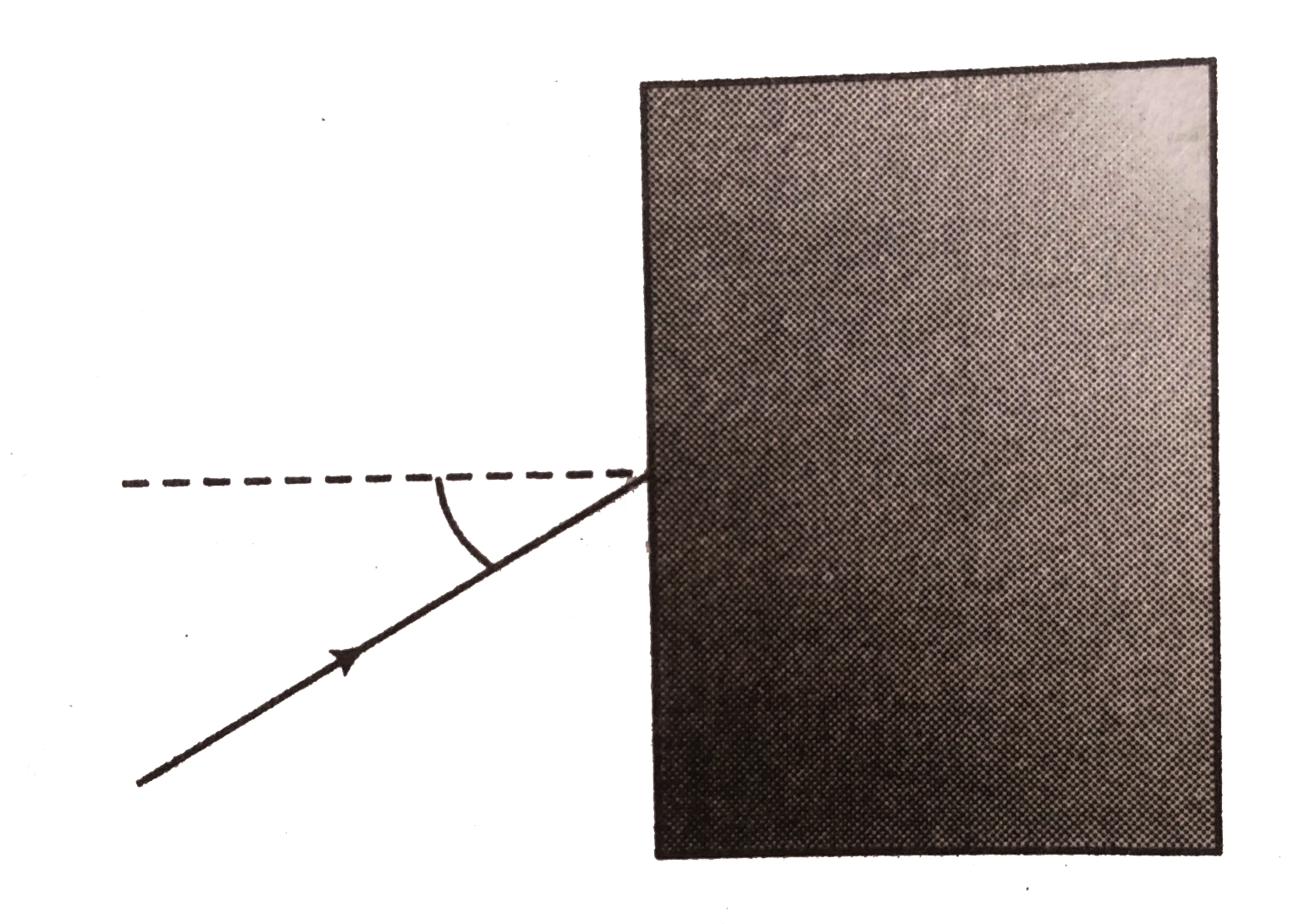 View Solution
View SolutionQuestion 194
A convergent lens with a focal length of f = 10 cm is cut into two halves that are then moved apart to a distance of d =0.5 mm (a double lens). Find the fringe width on screen at a distance of 60 cm behind the lens if a pont source of monochromatic light (λ=5000Å) is placed in front of the lens at a distance of a = 15 cm from it.View SolutionQuestion 195
In the Young's double slit experiment a point source of λ=5000Å is placed slightly off the central axis as shown in the figure-6.127.
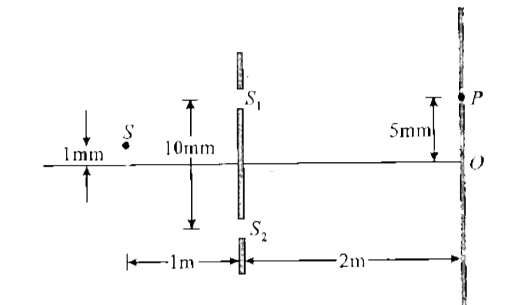
(a) Find the nature and order of the interference at the point P.
(b) Find the nature and other of the interference at O.
(c ) Where should we place a film of refractive index μ=1.5 and what should be its thickness so that maxima of zero order is obtained at O. View SolutionQuestion 196
A lens of diameter 5.0cm and focal length f=25.0cm was cut along the diameter into two identical halves. In the process, the layer of the lens α=1.00mm in thieckness was lost. Then the halves were put together to form a composite lens. In this focal plane a narrow slit was placed, emitting monochromatic light with wavelength λ=0.60μm. Behind the lens a screen was located at a distance b=50cm from it. Find:
(a) the which of a fringe on the screen and the number of possible maxima,
(b) the maximum width of the slit ∂max at which the fringes on the screen will be still observed sufficiently sharp.View SolutionQuestion 197
Light of wavelengthλ=500nm falls on two narrow slits placed a distance d = 50×10−4 cm
apart, at an angle ϕ=30∘ relative to the slits as shown in figure. On the lower slit a transparent slab of thickness 0.1 mm and refractive index 32 is placed. The interference pattern is observed at a distance D=2m from the slits. Then, calculate
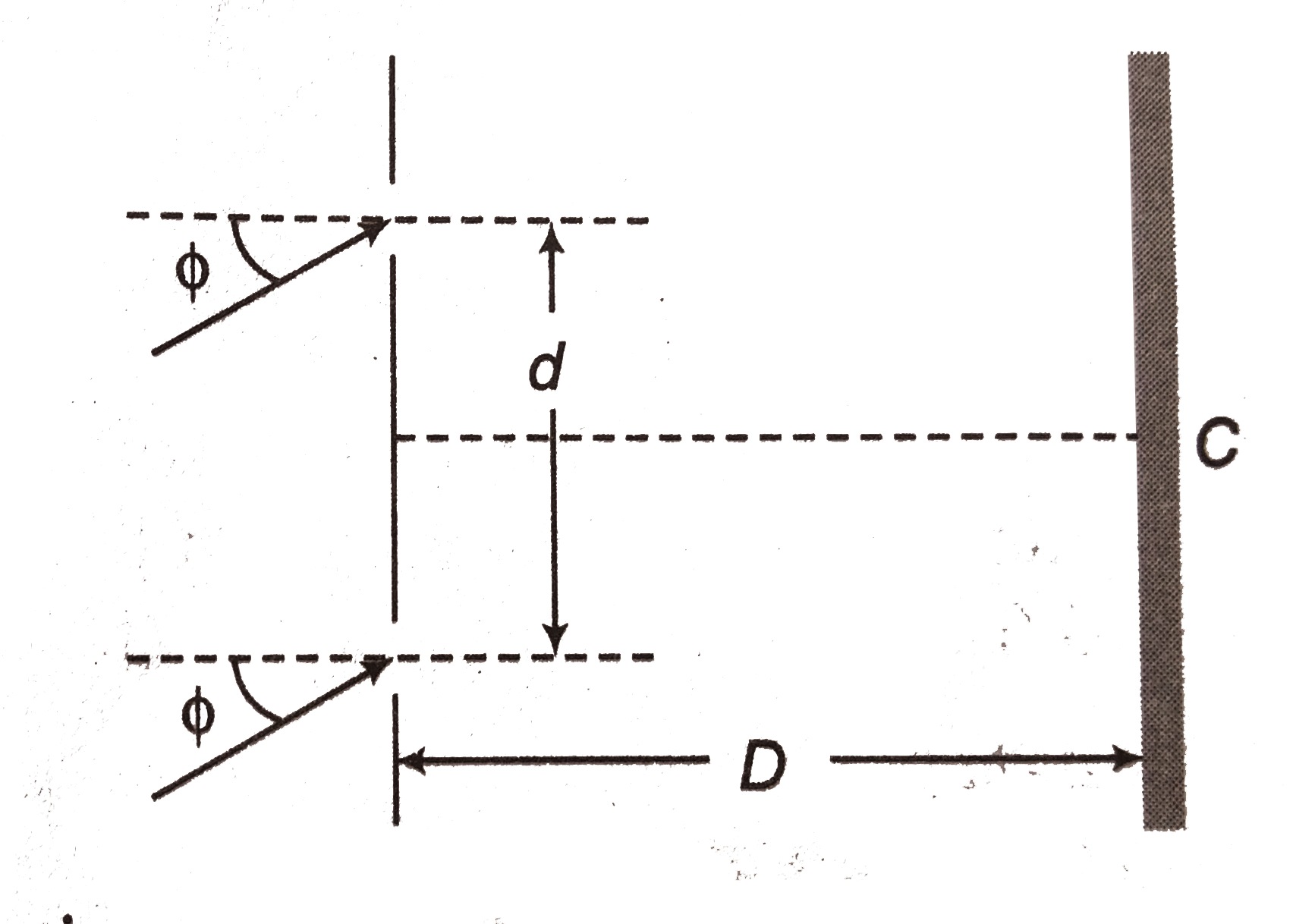
(a) position of the central maxima.
(b) the order of maxima at point C of screen .
(c)how many fringes will pass C, if we remove the transparent slab from the lower slit?View SolutionQuestion 201
In the YDSE, the monochromatic source of wavelength λ is placed at a distance d2 from the central axis (as shown in the figure), where d is the separation between the two slits S1andS2 .
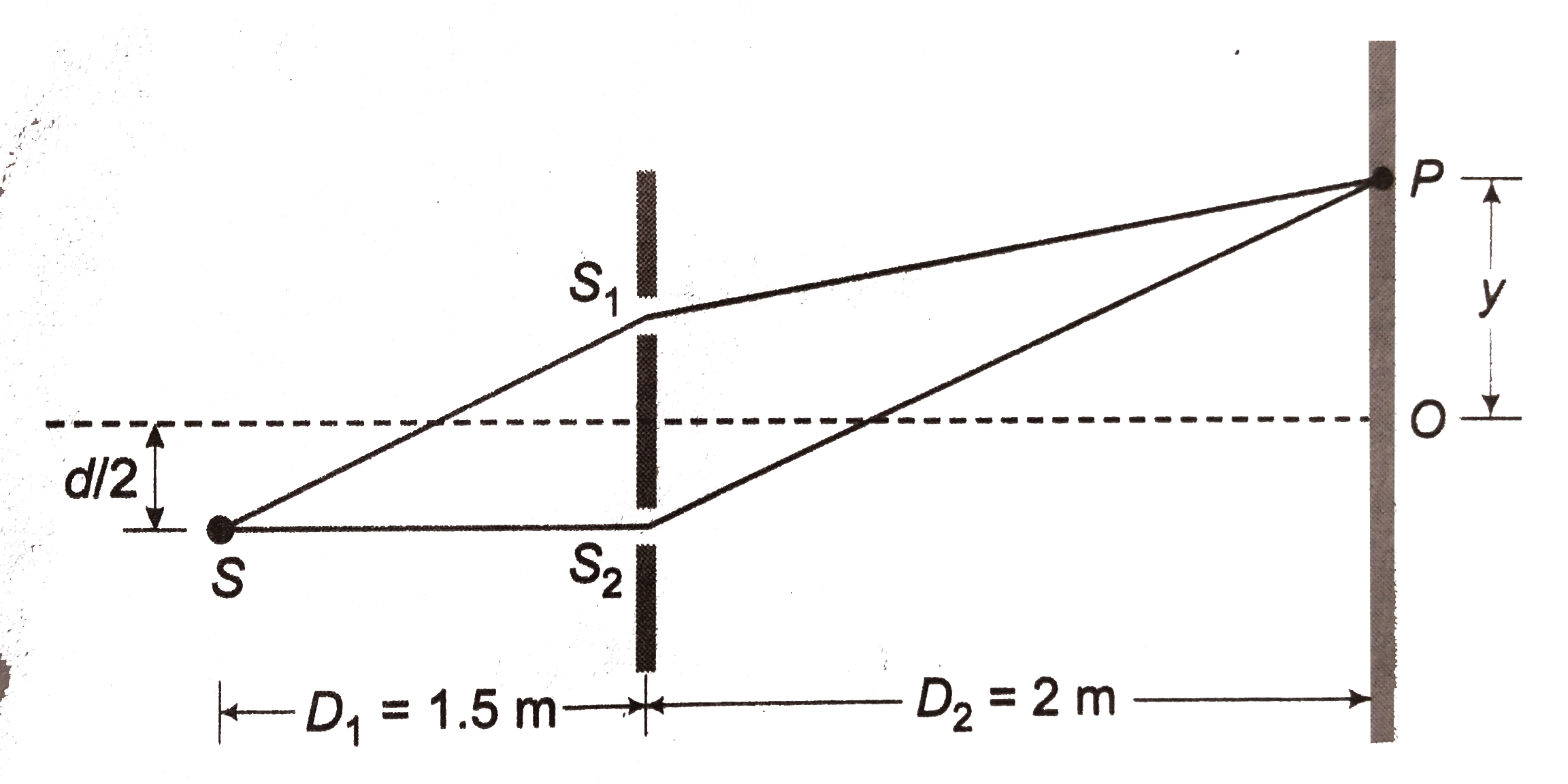
(a)Find the position of the central maxima.
(b) Find the order of interference formed at O.
(c)Now, S is placed on centre dotted line. Find the minimum thickness of the film of refractive indes μ=1.5 to be placed in front of S2 so that intensity at O becomes 34th of the maximum intensity.
(Take λ=6000Å,d=6mm.)View SolutionQuestion 202
Fringes are produced by a Fresnel's biprism in focal plane of a reading microscope which is 100cm from the slit. A lens inserted between the biprism and the eyepiece gives two images of the slit in two positions of the lens. In one case the two images of the slit are 0.45 mm apart in the other case 2.90 mm apart. If sodium light of wavelength 5893Å used, find the width of the interference fringes. If the distance between the slit and biprism is 10cm and refractive index of the material of the biprism is 1.5, calculate the angle in degrees which the inclined faces of the biprism makes with its base. View SolutionQuestion 203
In a biprism experiment with sodium light (λ=5893Å), the micrometer reading is 2.32mm when the eyepiece is placed at a distance of 100 cm from the source. If the distance between two virtual sources is 2 cm, find the new reading of micrometer when the eyepiece is moved such that 20 fringes cross the field of veiw. View SolutionQuestion 204
In a two slit experiment with monochromatic light fringes are obtained on a screen placed at some distance from the sits. If the screen is moved by m 5×10−2m towards the slits, the change in fringe width is m 3×10−5m . If separation between the slits is 10−3m , the wavelength of light used is View SolutionQuestion 205
In a YDSE, the separation between slits is 2mm where as the distance of screen from the plane of slits is 2.5m. Light of wavelengths in the range 200−800nm is allowed to fall on the slits. Find the wavelengths in the visible region that will be present on the screen at 1mm from central maximum. Also find the wavelength that will be present at that point of screen in the infrared as well as in the ultraviolet region.View SolutionQuestion 206
A double slit apparatus is immersed in a liquid of refractive index 1.33. It has slit and the screen 1 mm. The slits are illuminated by a parallel beam of light whose wavelength in air is 6300Å
a. calculate the fringe width.
b. One of the slits of the apparatus is covered by a thin glass sheet of refractive index 1.53. Find the smallest thickness of the sheet to bring athe adjacent minima on the axis.View SolutionQuestion 207
The young's double slit experiment is done in a medium of refractive index 4/3.A light of 600nmwavelength is falling on the slits having 0.45 mm separation .The lower slit S2 is covered by a thin glass sheet of thickness 10.4μm and refractive index1.5.the intereference pattern is observed ona screen placed 1.5m from the slits are shown
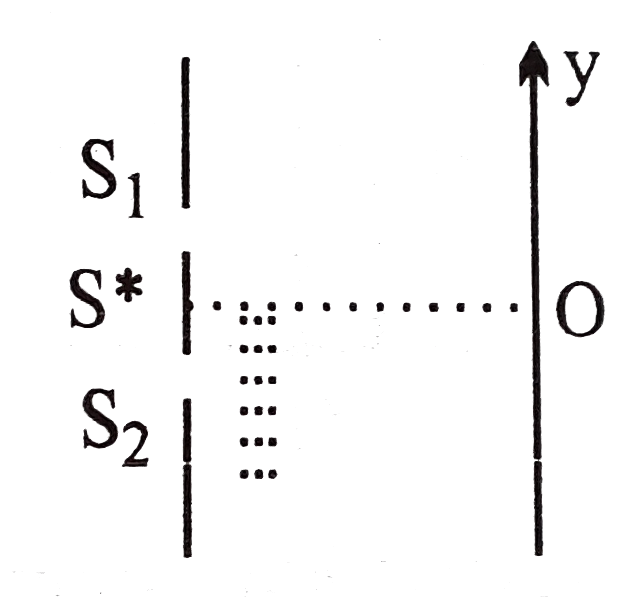
(a) Find the location of the central maximum (bright fringe with zero path difference)on the y-axis.
(b) Find the light intensity at point Orelative to the maximum fringe intensity.
(c )Now,if 600nmlight is replaced by white light of range 400 to700 nm find the wavelength of the light that from maxima exactly point O.[All wavelengths in this problem are for the given medium of refractive index 4/3 .Ignore dispersion]View SolutionQuestion 208
A screen is at distance D=80 cm form a diaphragm having two narrow slits S1 and S2 which are d=2 mm apart.
Slit S1 is covered by a transparent sheet of thickness
t1=2.5μm slit S2 is covered by another sheet of thikness
t2=1.25μm as shown if Fig. 2.52.
Both sheets are made of same material having refractive index μ=1.40
Water is filled in the space between diaphragm and screen. Amondichromatic light beam of wavelength λ=5000Å is incident normally on the diaphragm.
Assuming intensity of beam to be uniform, calculate ratio of intensity of C to maximum intensity of interference pattern obtained on the screen (μw=4/3)
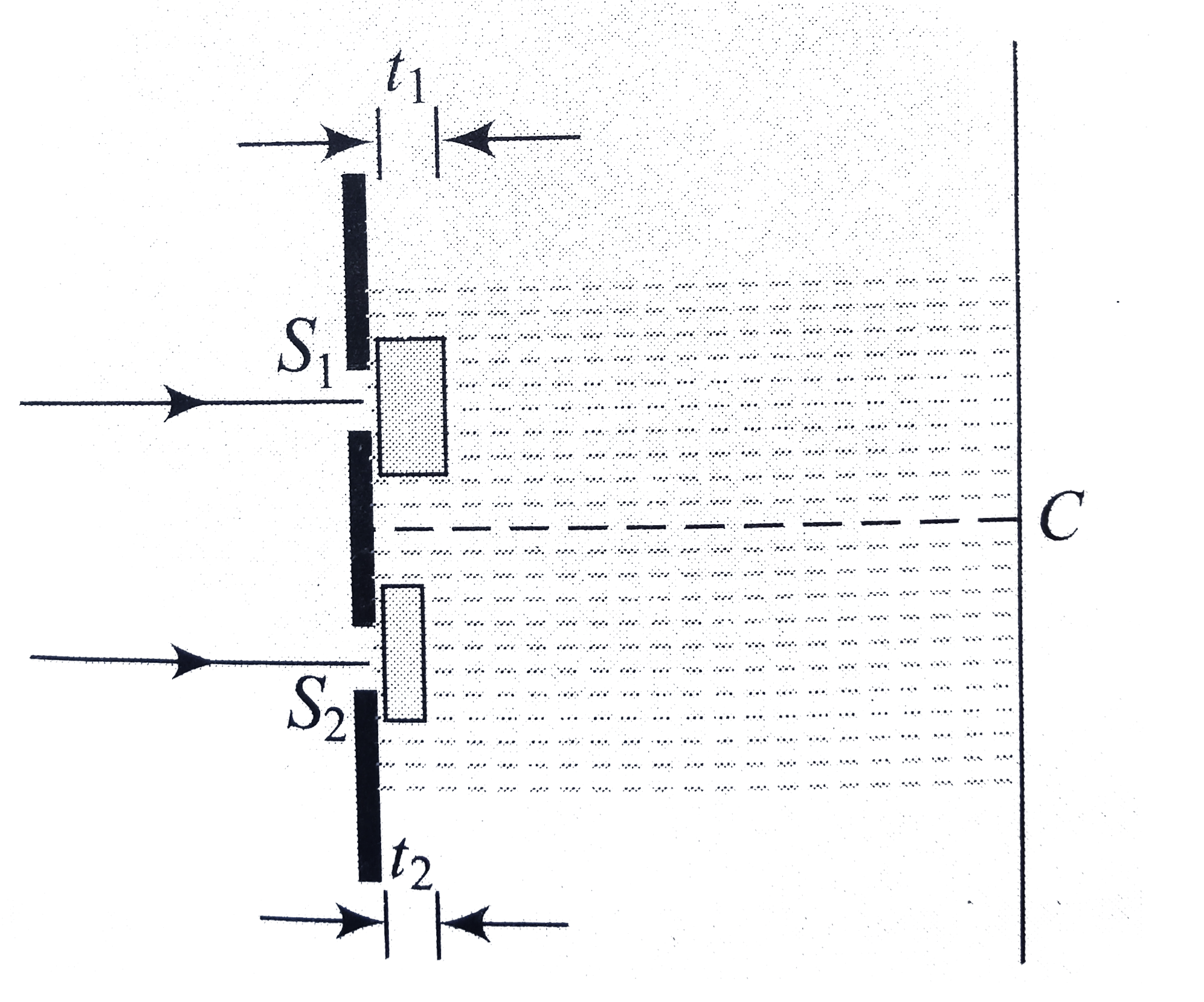 View Solution
View SolutionQuestion 209
In Young's experiment the upper slit is covered by a thin glass plate of refractive index 1.4 while the lower slit is covered by another glass plate, having the same thickness as the first one but having refractive index 1.7 interference pattern is observed using light of wavelength 5400Å
It is found that point P on the screen where the central maximum (n=0) fell before the glass plates were inserted now has 3/4 the original intensity. It is further observed that what used to be the fourth maximum earlier, lies below point P while the fifth minimum lies above P.
Calculate the thickness of glass plate. (Absorption of light by glass plate may be neglected.
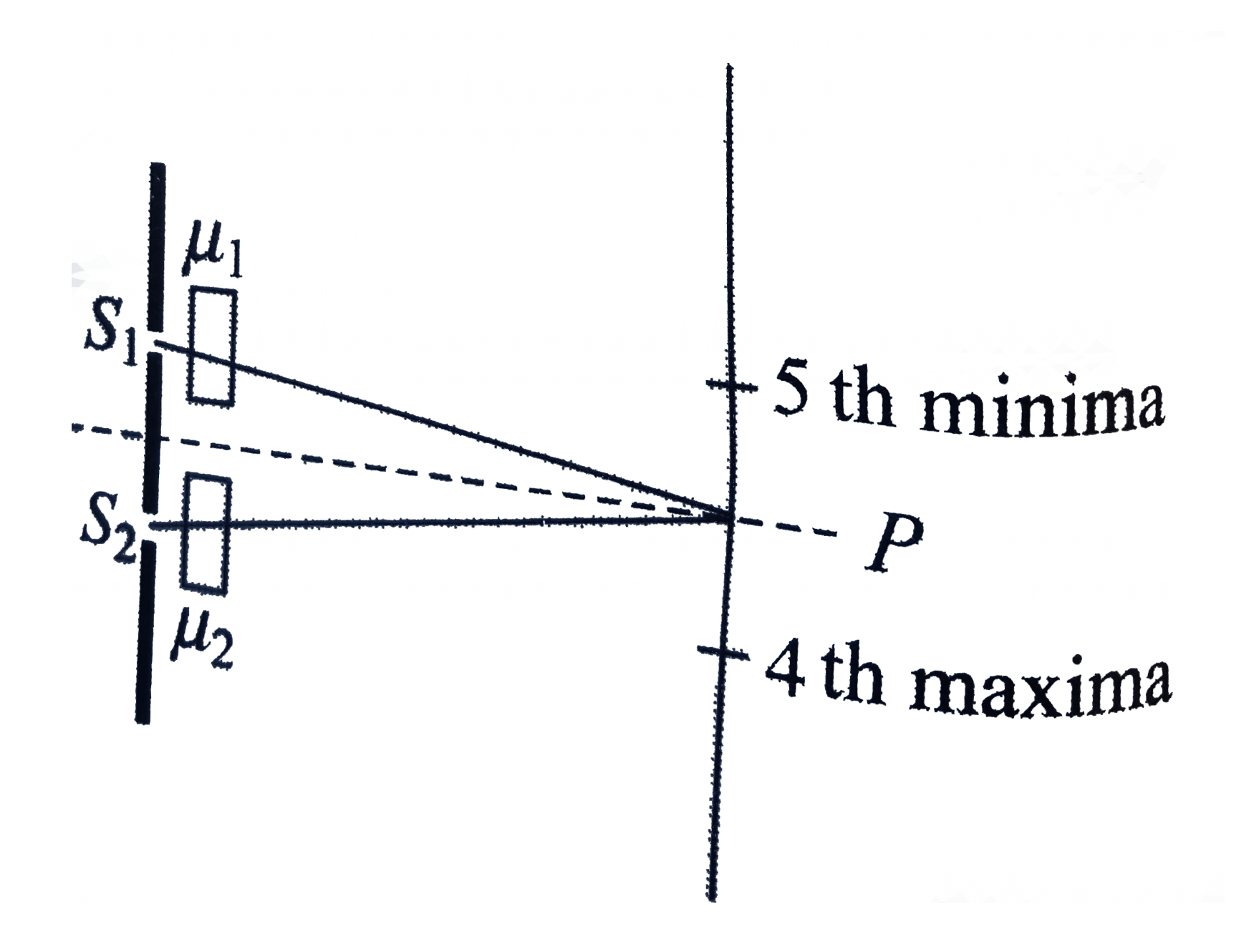 .View Solution
.View SolutionQuestion 210
In young's experiments ,the source of red light of wavelength 7×10−7m when a thin glass plate of refrative index 1.5 at this wavelength is put in the path of one of the interfering beams,the central bright fringe shifts by 10−3 m to the position previously occupied by the 5th bright fringe,Find the thickness of the plates. When the sources is now change to green light of wavelenght 5×10−7m ,the central fringe shifts to a position initially occupied by the 6th bright fringe due to red light,Find the refractive index of glass for the green light .Also estimate the changes in fringe width due to the change in wavelengthView Solution
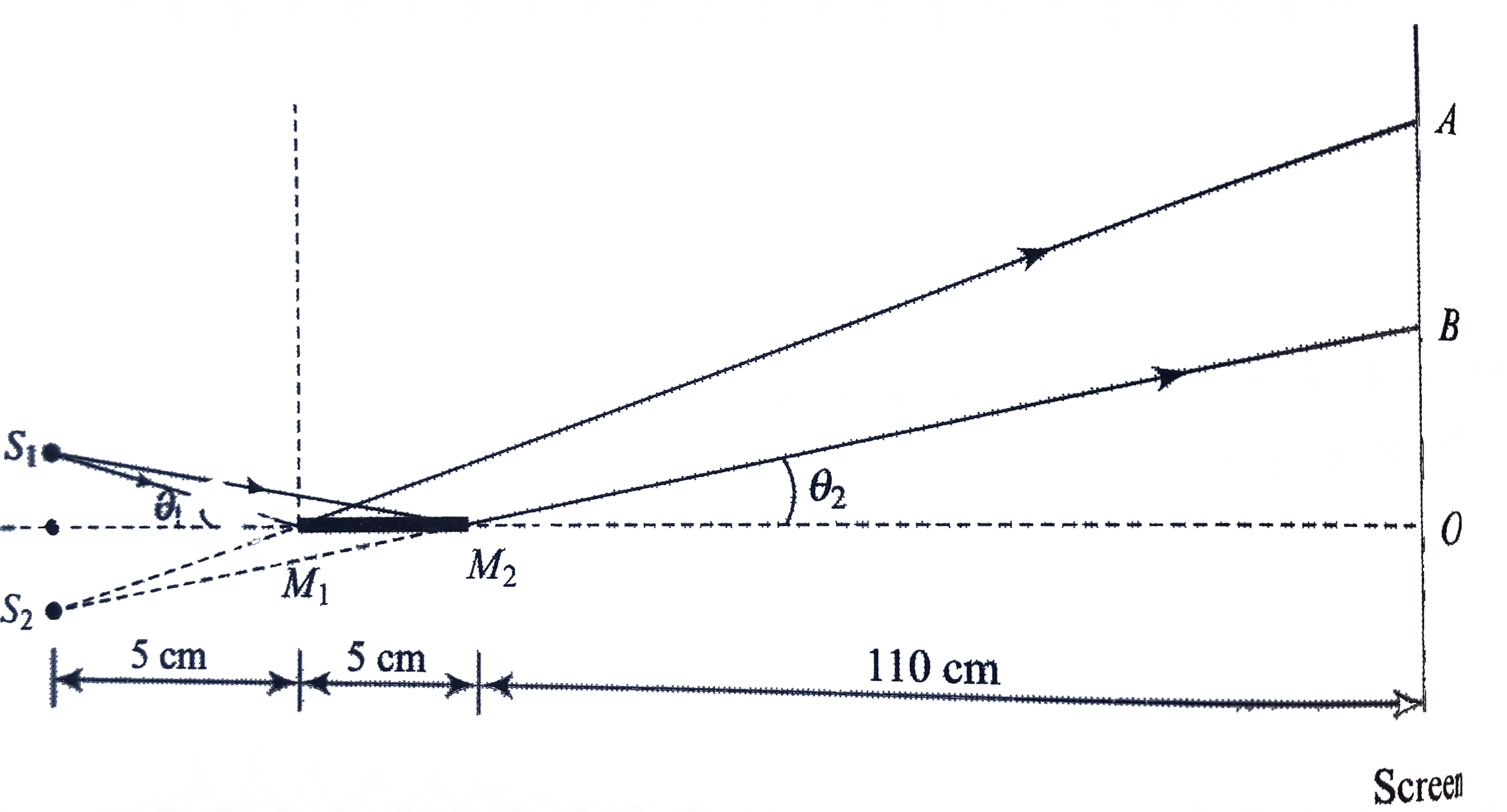
_E01_093_Q01.png)


